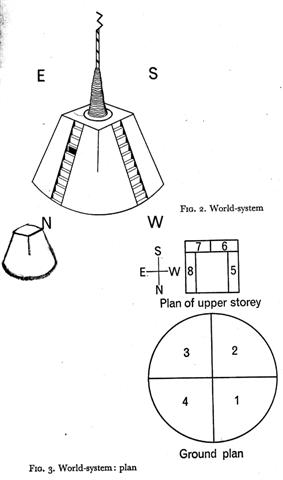Beyond the manzil Saad Al Akhbia comes the 2nd half of the nawaa (season) Hameemain, and its manzil Almuqaddam is beginning with the day beyond Gregorian day 460:
We have here 6 further glyph readings by Metoro to consider. Let's begin with manu rere: Ca1-22 shows a bird (with poor wings) possibly onboard a canoe. Although his wing in front has the Y-sign of 'the season of straw' (winter) Metoro said manu rere (living spirit). Once again he may have thought of the climate on Easter Island, where April means summer is in the past ('October'). But the glyph could suggest winter (È) is sailing away with a new dawn arriving at Ca1-24. When the moon crescent is close to the horizon it looks like a canoe, and this is the view when the moon is in the east as well as when the moon is in the west. April 13 can be read as 413 = 14 * 29½ and the pair of birds on each side of Ca1-23 is possible to see as strong support for my reading of the Gregorian dates. Furthermore, 103 + 365 = 468 (= 18 * 26). The poor condition of the wings of these birds could be a sign of the season. When it is cold birds aquire much feathers, but they quickly may be robbed of them, they can be stolen (Gouyo!):
According to Metoro's manu rere at Ca1-22 he may have meant the warm and light season was over. The spirit bird of breath had to leave at the end of his term, but later, at a new beginning, manu rere would return: "... Then the spirit was gathered in. And this was the chant for that work: Let the spirit of the man be gathered to the world of being, the world of light. / Then see. Placed in the body is the flying bird, the spirit-breath. / Then breathe! / Sneeze, living spirit, to the world of being, the world of light. / Then see. Placed in the body is the flying bird, the breath. / Be breathing then, great Tu. Now live! Then man existed, and the progeny of Tu increased ..." (Antony Alpers, Legends of the South Seas) At his end the 'old bird' had to leave in a canoe together with his relatives: "... the first month of the Moriori year, was named Rongo (Lono). On the first of the new year the Moriori launched a small canoe to Rongo, although they built and used only rude craft for their fishing excursions. The canoe was manned by twelve figures symbolizing the personifications of the twelve months. Sometimes twenty-four figures were placed in the canoe, and Skinner interprets the additional twelve as representing the female counterparts of the months. As an old Maori once remarked. 'Everything has its female counterpart.' ... A curious diversion appears in the month list of the people of Porapora and Moorea in the Society Islands, which sheds light on the custom of the Moriori who sometimes placed 24 figures in the canoe which they dispatched seaward to the god Rongo on new years day. The names of the wives of the months are included, indicating that other Polynesians besides the Chatham Islanders personified the months ..." (Makemson, a.a.) There are 10 days from a Sun change in April 3 to a Moon change in April 13 (where 41 * 3 = 123):
If the months of Sun were measured as 30 days and the months of Moon according to her phases, then the difference would be 1 day in 2 months. Sun would gradually come closer to the position of Moon. 10 days' difference early in April would evaporate to zero in 20 months. 20 * (30 - 29½) = 10. At the nakshatra position of Mimosa there is a poor bird which could refer to Sun, and the pair of birds in Almuqaddam could then refer to Moon. However, the type of bird is the same and instead we should rather see them as a quartet. The 4th poor bird (te manu te henua) is positioned where there is a tiny crack in henua, and where the star at the Tail (Deneb) of the Sea Monster (Kaitos) surely must represent the tail (end part) of winter - whereas the front part of the monster has legs:
| ||||||||||||||||||||||||||||||||||||||||||||||||||||||||||||||||||||||||||||||||||||||||||||||||||||||||||||||||||||||||||||||||||||||||||||||||||||||||||||||||||||||||||||||||||||||||||||||||||||||||||||||||||||||||||||||||||||||||||||||||||||||||||||||||||













